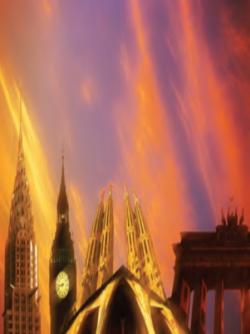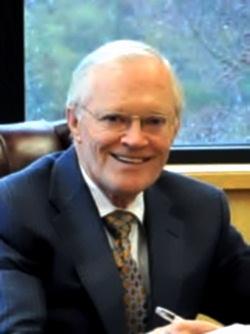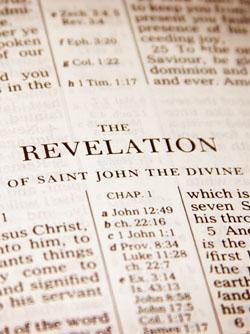The Daughter of Babylon?
John described an opulently dressed woman riding on a scarlet beast. This woman conducts intimate relations with rulers of the world, and has influenced the world with her teachings. But just who is the mysterious, opulently dressed woman?
"For those with eyes to see, the real meanings of so-called "mysterious" prophecies in the books of Isaiah and Revelation are coming into focus—in spite of widespread efforts to obscure the true intent of the Scriptures. Events making news today, along with the record of history, show clearly that many long-pondered biblical prophecies are coming alive right before our eyes!
Nearly 2,000 years ago, the Apostle John saw in vision a series of prophetically significant events that would occur at the end of this age, just before Jesus Christ's return to the earth. In Revelation 17:1–6, John described an opulently dressed woman riding on a scarlet beast. This woman conducts intimate relations with rulers of the world, and has influenced the world with her teachings. John records the name of the woman as "MYSTERY, BABYLON THE GREAT, THE MOTHER OF HARLOTS AND OF THE ABOMINATIONS OF THE EARTH." Seven hundred years earlier, Isaiah had recorded prophecies about a woman he called the "daughter of Babylon" and "The Lady of Kingdoms" (see Isaiah 47). Isaiah portrayed this woman as making extravagant and expansive claims: "I shall be a lady forever… I am, and there is no one else besides me… I shall not sit as a widow, nor shall I know the loss of children."
But just who is the mysterious, opulently dressed woman pictured in these prophecies, and why is she linked with the ancient city of Babylon? What role has she played in history, and what role will she play on the world stage as the end of the age approaches?
Fulfilled Prophecies
When Bible prophecies describe a "woman," the reference is often to a church or a religious system. The woman mentioned in Revelation 12:1 is the true Church of God. John also appears to refer to the Church as a woman in 2 John 1 (see also 2 Corinthians 11:2; Ephesians 5:25–27).
But notice another woman, described in Revelation 17:1–6. This woman, elaborately adorned in purple and scarlet, gold and precious stones, is a religious organization or system that has influenced the world through its teachings. This powerful institution has also maintained intimate relations with the political leaders of the world. Jesus Christ calls His true Church a "little flock" (Luke 12:32), in contrast to the size and power of this "woman" of Revelation 17.
Is there a church that has adjudicated disputes between ruling kings—and even promoted or dethroned kings? Is there a church that has claimed the right to divide the globe among different exploring nations? Is there a church that even today maintains an extensive diplomatic corps and takes active part in negotiations between contending nations? Perhaps it is no surprise that for many centuries, Bible scholars have commonly identified the woman of Revelation 17 as the Roman Catholic Church.
Notice the names Scripture gives to this woman. "Babylon the Great" and "daughter of Babylon" hint that many of this organization's religious teachings can be traced back to ancient pagan Babylon. Indeed, from the concept of a sovereign Pontiff, to the veneration of Mother and Child, to the worship of a newborn god on December 25, to the widespread use of statues in worship, to the devotion to a "sacred heart"—again and again we can find parallels between Babylonian and other ancient pagan teachings and the rituals and beliefs of the Roman church (see Hislop, The Two Babylons). Despite so many practices taken from non-Christian worship, this church proclaims that it alone holds the valid "apostolic succession" from Jesus Christ, even though honest Catholic theologians will concede that this claim cannot be verified, and that the most-often-cited "evidence" to support these claims is found in forged documents (see Kung, The Catholic Church, pp. 30–31). Historical sources show plainly that claims for universal supremacy of the Bishop of Rome were put forth by ambitious men who wanted to elevate themselves over leaders in Antioch, Alexandria, Jerusalem and Constantinople (Kung, pp. 45–52).
The reference to the scarlet woman as "THE MOTHER OF HARLOTS" is both embarrassing and instructive when placed in a historical context. During the "Protestant Reformation," many new churches came out of the Roman church in "protest" of various teachings and practices. The idea of a supreme papacy was rejected, along with ideas about indulgences, purgatory, prayers to and for the dead, and many other teachings not found in Scripture. However, if we look at the matter objectively, we have to admit that these churches have retained many other non-biblical doctrines and practices (e.g. celebration of Christmas, changing the Sabbath day to Sunday) that originated from Rome. The relationship between the Roman church and the Protestant churches is like that of mother and daughter. This is why the scarlet woman is also called the "MOTHER… OF THE ABOMINATIONS OF THE EARTH"—her corrupted, non-biblical religious teachings were borrowed from and have influenced the religions of the world!
The prophecies in Revelation 17 show this opulently dressed woman riding a beast with seven heads and ten horns. The seven heads are seven revivals of a political system linked to the ancient Roman Empire. The ten horns are ten kings or political leaders who will give their power (surrender their sovereignty) to a dominant political leader who will emerge to lead a revival of this "Roman" system in central Europe at the end of the age. The woman riding the beast depicts an influential religious leader who promotes and guides this political system. It is no secret that Roman popes crowned the emperors of the Holy Roman Empire, and that modern popes have promoted the emergence of what has become the European Union. Bible prophecies warn that at the end of this age, Satan will empower and influence a political leader who will dominate a unified ten-nation European state, aided by a Babylonish religious leader of global stature (see Revelation 13).
The Days Ahead
Despite recent scandals involving clerical sexual abuse of young children and teens, the Roman Catholic Church is making inroads among the membership of other churches that have experienced their own problems. Pope Benedict XVI has recently reached out to Anglicans who are upset about their church's liberalization, allowing them to retain much of their traditional liturgy and custom if they convert to Roman Catholicism.
Benedict's planned September 2010 visit to England is also expected to raise controversy and perhaps further destabilize the Anglican community. During this visit, observers expect that he will proclaim Cardinal John Henry Newman as a Roman Catholic saint. Newman, an intellectual 19th century Anglican clergyman who converted to Roman Catholicism, is seen by many as a symbol of Benedict's desire that more Anglicans will "cross the Tiber" and join the Roman church.
Pope Benedict is also actively pursuing ecumenical efforts to re-unite with the Eastern Orthodox churches, which separated from Rome nearly a thousand years ago. Indeed, the "mother" church is actively seeking the return of her "separated" daughters—just as Bible prophecies indicate! Watch for these expansive ecumenical efforts of the Roman church to increase—and to culminate with the "daughter of Babylon" promoting and supporting a political figure who will emerge from the ashes of the old Holy Roman Empire—as these ancient prophecies come alive in the news!






